Bridge Over Troubled Finances
Classic Lake Park bridge is falling apart. Will county pick cheap option? Will neighbors fight this?
Check the Milwaukee County’s press releases and you’ll find none announcing the informational meeting held at O’Donnell Park Pavilion Thursday, October 15th, to discuss the perilous state of a 110-year old reinforced concrete bicycle and pedestrian bridge in the county-owned Lake Park. Nor is there any money in the budget to solve the problem, but even so, an event was held.
Jeff Bentoff of the Historic Water Tower Neighborhood informed me about it in a Facebook message Wednesday. “It’s all been under the rug as far as I can tell,” Bentoff said.
But with his help and that of concerned neighbors like Sandra McSweeney, Chuck Kahn, Patti Keating Kahn, Sally Peltz and others, the Miller Room was filled with about 60 people to hear a presentation by Parks Department head John Dargle about the aged span, and the options for repairing, replacing or removing it.
Dargle said the engineers from Graef had studied the graceful concrete span earlier in the year and had issued a Lake Park Arch Bridge over Ravine Road In-Depth Inspection Report in July. The results:
- The engineers found “large areas of delaminations on the underside of the bridge,” he said.
Translation: Chunks of concrete are liable to fall off without notice upon the road and pedestrian walkway some 50 feet below. The sinuous Ravine Road, one of the city’s most attractive drives, has been closed to traffic since December 2014, when an initial inspection revealed the hazard.
The deck of the bridge remains open to pedestrians and bicyclists, although park vehicles are no longer allowed on the span.
- There were problems with the hollow abutments, vaulted abutments and wingwalls of the structure, Dargle said.
- The engineers found a “major local failure” in the southeast abutment. “It is no longer a crack. It is now an actual separation,” he said of the failing structure.
- Photographs of the condition of the bridge, which may be seen in the report, further detail its bad condition. There is considerable erosion.
- Concrete elements in the footings are liable to “break like chalk” due to deterioration, he said. The quarter-inch reinforcing rods [which would not meet today’s standards for concrete construction] are breaking through the bridge.
- Salt has exacerbated the problems, he said, although why a pedestrian bridge should be heavily salted was not answered.
- The engineers found problems with the deck, spandrels, parapets, struts, diaphragms and thrust blocks of the bridge, he said, leaving “very little to resist structural forces.” The very earth beneath the bridge has eroded, with the mud backfill washed away in places.
Dargle then presented some options for the bridge.
One was removal without replacement at a cost of $120,000. “But nobody wants that, right?” Dargle asked the audience. Confirmed: Nobody wants removal without replacement. Other options included rehabilitating the bridge, which might give it another 15-20 years; rebuilding it using modern materials and engineering standards to result in a bridge that would last at least 75 years; or to replace the bridge with various prefabricated truss and girder systems. The latter options would be the cheapest, as Dargle noted.
The Options and Costs
The Graef engineer’s report laid out these options:
Structure Rehabilitation
For planning purposes, the estimated construction cost for rehabilitation is $1.8 million.
Given the historic nature of this unique bridge, there will likely be a desire to rehabilitate it and keep as many of the original components as possible. It is our opinion that arch ribs, spandrels, diaphragms, struts, and thrust blocks could be rehabilitated. Due to advanced deterioration, low load rating, and limited effectiveness of rehabilitation efforts on minimally reinforced concrete, we recommend replacing the deck, parapets, vaulted abutments, and wingwalls if the rehabilitation option is pursued. … For the Ravine Road bridge, a long term economical rehabilitation does not seem feasible.
Replacement
- Reinforced Concrete Arch
For planning purposes, the estimated construction cost for complete bridge replacement in-kind is $2.6 million.
Dimensions of the existing structure can be used to match the historic aesthetics/architectural features with the added benefit of using modern materials.
Deficiencies in the existing design can be addressed with improved detailing (such as at the vaulted abutment walls and wingwalls), and modern reinforcement standards. Of the 5 bridges in Lake Park, 3 have been rehabilitated within the past 10 years (Lake Park Road bridge and the 2 Lions bridges).
- Prefabricated Steel Truss
For planning purposes, the estimated construction cost for replacement with prefabricated steel truss is $1.6 million.
Prefabricated steel trusses are common superstructure types used for recreation trails. They are normally supported by reinforced concrete abutments and piers. The truss superstructure, along with the railings and concrete deck form, is shop fabricated in field sections which are then bolted together on site.
- Prestressed Concrete Girders
For planning purposes, the estimated construction cost for replacement with prestressed concrete girder bridge is $1.5 million.
Prestressed concrete girders have been used as the superstructure type for pedestrian bridges… The girders are shop fabricated and transported to the construction site for erection onto the substructure units. Because prestressed concrete girders can not be field spliced, girder lengths may be limited by the transportation route from the fabrication yard to the bridge site, as well as the crane’s lifting capacity.
Also the report noted that it should not be difficult to reopen Ravine Road: With a nominal amount of effort, we recommend that Ravine Road and the north foot path adjacent to the north abutment be reopened to traffic after the loose delaminations are removed by a contractor from the deck underside, arch ribs, spandrels, diaphragms, and struts.
Neighbors Opposed to Steel Bridge
It should be noted these estimates for various solutions were done in-house and do not represent bids on actual contract documents. Furthermore, there is no funding for any bridge work on this structure included in the 2016 Milwaukee County Capital Budget. The meeting might have just been held to put the deep-pocketed neighbors on notice that they may have to come up with some of the funding themselves if they don’t want a steel truss bridge in their park.
Perhaps setting the stage for this, the Historic Water Tower Neighborhood has issued a resolution opposing the construction of a steel truss bridge to replace the Ferry and Clas structure in the Frederick Law Olmsted-designed park. Its text begins:
Therefore, Be It Resolved, That the Historic Water Tower Neighborhood opposes replacing the historic Lake Park Arch Footbridge over Ravine Road in Lake Park with a prefabricated steel truss bridge or any other architectural style different from the current bridge. We also oppose simply demolishing the bridge. HWTN encourages the county to consider and act promptly on the other two alternatives outlined in the July 2015 inspection report on the bridge — either repairing the current bridge or replacing it with a new reinforced concrete arch bridge that matches the dimensions and aesthetic and architectural features of the current bridge.
The association noted that the City’s historic guidelines for the park state that:
Every attempt should be made to maintain the historic vehicular and pedestrian circulation system in the park including drives, paths, stairways and bridges. New parking areas, roadways, paths or bridges should be designed so as to be compatible with the historic character of the park.
The association has also documented the history of the bridge.
As Bentoff noted, there will be many more steps in this process, and many more hearings to be held on the fate of the bridge. Given the history of the park, considerable discussion of the issue might be expected, that that is more likely if the county issues press releases regarding any meetings.
More about the Ravine Road Bridge Project
- City Should Enforce Reopening of Ravine Road, Park Friends Say in Filing - Lake Park Friends - Sep 28th, 2023
- MKE County: Ravine Road Debate Heats Up - Graham Kilmer - Aug 14th, 2023
- MKE County: Ravine Road Project Could Begin in 2024, With Pedestrian-Only Option - Graham Kilmer - Aug 1st, 2023
- MKE County: Lake Park Bridge Open For First Time In 6 Years - Graham Kilmer - Oct 29th, 2022
- Friday Photos: Lake Park Bridge Overhaul Nears Completion - Jeramey Jannene - Sep 23rd, 2022
- MKE County: Lake Park Bridge Needs $1 Million More - Graham Kilmer - May 18th, 2021
- County Receives $2 Million Grant for Lake Park Bridge - County Executive Chris Abele - Sep 12th, 2018
- County Parks To Seek State Grant to Fund Ravine Road Bridge Project - Milwaukee County Parks - Feb 8th, 2018
- Op-Ed: Lake Park’s Bridge Spans History - Paul Daniel Marriott - Apr 5th, 2017
- Public Forum For Lake Park Bridge - Virginia Small - Feb 13th, 2017
Read more about Ravine Road Bridge Project here
Plenty of Horne
-
Villa Terrace Will Host 100 Events For 100th Anniversary, Charts Vision For Future
 Apr 6th, 2024 by Michael Horne
Apr 6th, 2024 by Michael Horne
-
Notables Attend City Birthday Party
 Jan 27th, 2024 by Michael Horne
Jan 27th, 2024 by Michael Horne
-
Will There Be a City Attorney Race?
 Nov 21st, 2023 by Michael Horne
Nov 21st, 2023 by Michael Horne



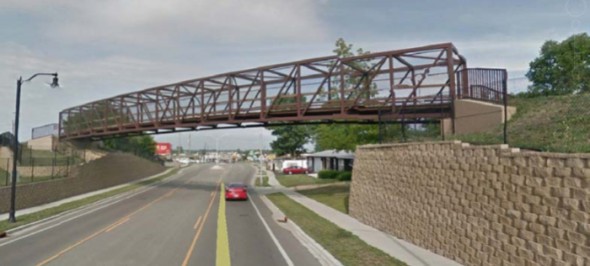
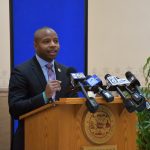
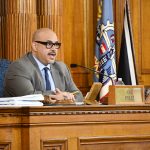
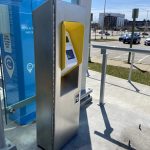
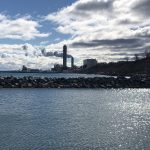
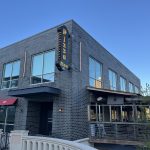





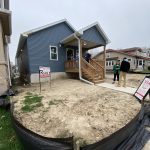




Thanks for this thorough report, Michael and UM! At one point this year the County Board was trying to set aside money for this looming repair. Does anyone know what happened to that plan?
Also, what’s with government efforts to keep citizens in the dark on major public works projects, especially involving parks? It also appears the City did no mass press release about the designs submitted at the end of June for the Lakefront Gateway project–a new park and pedestrian bridge from downtown to the lakefront. It’s been hailed as a major transformative project, and there was a website to solicit public input. You just had to be in the know or catch an article by an intrepid writer about the designs and website. The selection committee of “stakeholders” has reportedly already chosen a design.
A little transparency and real community engagement will go a long way. Top-down fiats are passe.
Was the bridge originally designed for automobile use? If the bridge dates from 1905, it’s possible the original design meant to accommodate some motorized traffic, but it seems unlikely.
If the original design of the bridge was for pedestrian only use, certainly a replacement likewise limited exclusively to pedestrian use and matching most of the architectural elements of the original could be constructed for far less than the $2.6 million estimate provided here. The only reason the estimate quoted here is so high is because the new design would not be a replacement pedestrian bridge, but one that would hugely overbuild it to accommodate heavy service and patrol vehicles.
Keep the new design consistent with the original purpose of the bridge as part of the network of pedestrian thoroughfares in the park and the cost could be greatly reduced. In short, keep it consistent with the historic nature of the park, including the bridge’s original functional purpose.
Is this the bridge where a semi truck got stuck?
@TF: No, that was the “lions” bridge south of the Lake Park Bistro parking lot, which was fixed courtesy of insurance. This bridge is north of the Bistro.
Correct structure rehab is $1.8 million. The two less expensive options are $1.5 and $1.6 million. This type of repair should be covered by capital borrowing, i.e. bonding. The difference between rehab and the substitutes is between $200k and $300k. That amount is negligible in terms of government bonding cost.
I don’t see the problem here. The county should do this job right for an historic Frederick Law Olmsted structure. If the park is a designated historic district perhaps there is some federal historic assistance available besides. If not, get the park designated. It should be, regardless.
For $800,000 more than the rehab cost of $1.8 million, they could do an authentic-looking bridge that will last 55-60 years longer. I hope they will consider that long-term solution rather than just a 15-20 year band-aid (or something ugly that will rattle Olmsted in his grave). Infrastructure is supposed to be built with future generations in mind.
Agreed!
Michael a pubic interest meeting to form Friends Of Cathedral Square Park is being held on Thursday, October 22 @5:30 p.m. at the Business Journal Building on Jefferson St. Hope you can attend.
Let’s not just kick the can down the road a bit. To get the proper funding and do it right, I would even consider selling naming rights. Looking for options….